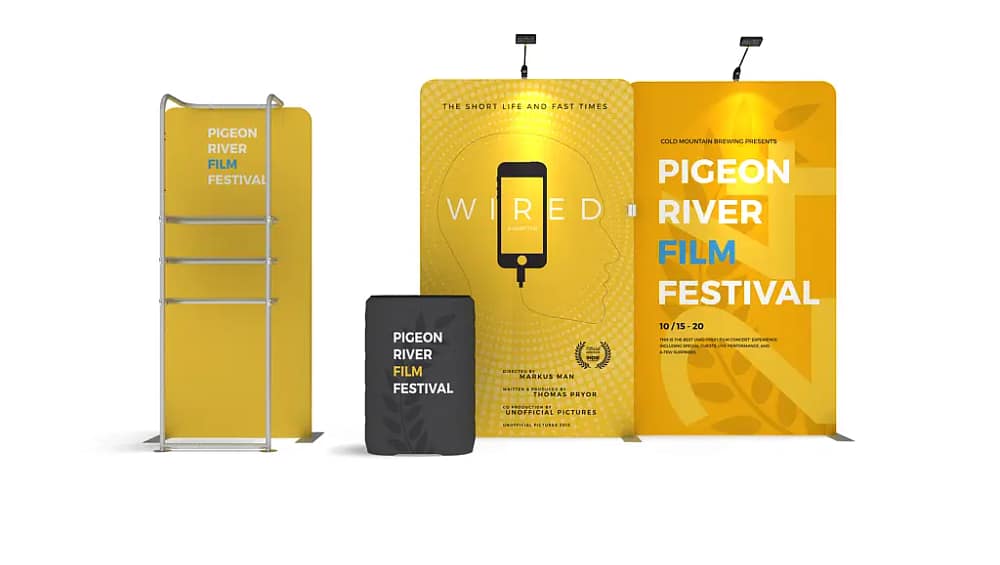Updated: 27 Aug 2025
Introduction
Choosing the right display shape is one of the simplest ways to influence the look, feel, and flow of your booth. WaveLine® Media Displays offer straight and curved formats — each with distinct advantages depending on footprint, traffic flow, and brand personality. This guide compares both so you can select confidently.
Straight Displays
Straight walls maximise edge-to-edge real estate for graphics and copy. They create a clean, architectural line that sits neatly against shell-scheme walls or defines the rear of an inline stand. Because the surface is flat, large typography and grid-based layouts read crisply at a distance.
When to Choose Straight
Use straight walls for product ranges that need orderly presentation, or when you want to mount a counter flush against the backdrop. They’re also ideal for tight aisles where every centimetre of floor space matters.
Design Considerations
Place master branding across the top third and anchor key visuals centrally. Keep copy concise to maintain impact from five metres away.
Curved Displays
Curved walls create an inviting, organic feel that gently guides visitors into the space. The bend improves sightlines from angled approaches and can help screen storage or meeting nooks behind the main backdrop.
When to Choose Curved
Pick curved formats for open corners and island stands, or whenever you want to soften a technical brand with a friendlier profile.
Design Considerations
Use asymmetry to accent the curve and draw the eye to a hero product or demo station. Keep the horizon lines gentle so artwork doesn’t appear distorted.
Which Shape Fits Your Strategy?
Many teams mix shapes: a straight rear wall for bold messaging plus a curved wing that frames a demo area. Explore compatible sizes and accessories on the WaveLine® Media Displays page and build a shape language that supports your goals.







